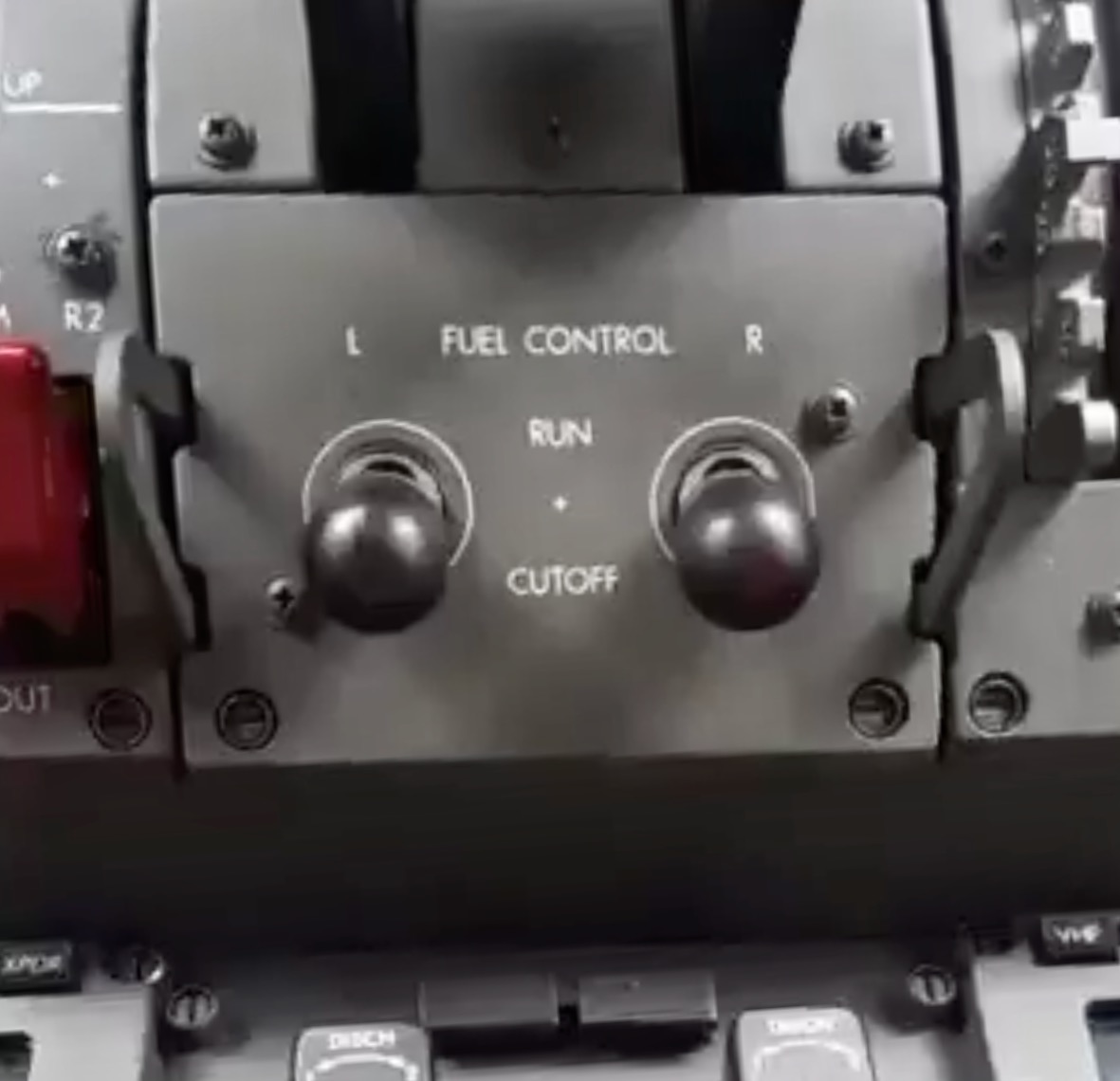
After both engines failed on an Air India Boeing 787 during takeoff, questions quickly surfaced about a critical cockpit control, but the FAA says there’s no design flaw to blame.
FAA Declares Boeing 787 Fuel Cutoff Switches Safe
The U.S. Federal Aviation Administration (FAA) has stated that the fuel cutoff switches aboard the Boeing 787 Dreamliner are functioning properly and do not pose a safety threat. This comes after a preliminary report by India’s Aircraft Accident Investigation Bureau (AAIB) found that both engines shut down on Air India Flight 171 shortly after takeoff from Ahmedabad, killing 230 passengers, 12 crew members, and 19 people on the ground. The report indicated that the fuel shutoff switches were placed into the “CUTOFF” position.
The FAA concluded its review and informed carriers that there is no systemic flaw in the design of the switches. These guarded toggle switches are located on the center console between the pilots and are specifically designed to prevent accidental activation. According to the preliminary report, one pilot asked, “Why did you cut off?” to which the other pilot replied, “I did not do so.” It is not clear who pulled the switch. Despite the switches being returned to “RUN,” both engines had already lost thrust during that critical phase of flight, leading to the deadly crash.
> Read More:Preliminary Report Shows Fuel Switches Flipped Seconds After Takeoff
Although no official mandates were issued, the FAA emphasized that it had previously addressed a related concern in a 2018 bulletin (with a Boeing 737), but again determined that no Airworthiness Directive was warranted at that time either. Instead, the FAA does not consider the issue to be unsafe.
Although the fuel control switch design, including the locking feature, is similar on various Boeing airplane models, the FAA does not consider this issue to be an unsafe condition that would warrant an Airworthiness Directive on any Boeing airplane models, including the Boeing 787.
While US, European, and other major safety regulators are not mandating any action, the South Korean Ministry of Transport is requiring inspections of all 787s operated in the country, a more cautious stance in contrast to the FAA. The inspection will focus on the fuel switches.
CONCLUSION
The FAA believes the root cause was not a mechanical defect but likely human error. For now, the 787 remains cleared to fly, and no changes to aircraft systems are planned. Next, we’ll shift to the pilots involved in the AI171 crash.
image: @turbinetraveler/ X // Hat Tip: One Mile At A Time




There ought to be a 10 cents plastic flip-up cover over the switches to prevent them from being turned off prematurely . Easy fix .
Do we have to completely idiot-proof every switch and knob now?
Whelp some ( not you ) should idiot proof their keyboard!
Go bob on my knob assmunch
Gee thanks, but I’ll pass
@Matthew: you wrote: “killing one crew member”. This is not correct………
And, of course, the crash happened in Ahmedabad, not Delhi.
I thought a video recorder was recovered but I can’t find any reference it. Did anyone else have access to the flight deck? As the switches require both hands, to activate I find FAA correct in their conclusion.
230 passengers, 12 crew, and 19 people on the ground died. Not just 1 crew member.
Ja, I got up late and wrote this without coffee. Now I’m caffeinated.
Is it possible one of the pilots confused the fuel switches with another set of switches?
Some thing similar happen on a B737 freighter in late 2024 in Lithuania.
We need a B787 pilot to pipe in.
787 Pilot here,
It takes a deliberate “up and over” motion to move the fuel cutoff switches over a gate to be activated or turned off.
There is absolutely no way the fuel cutoff switches were “accidentally” turned off or confused with another item.
@787 … Yep .
Not a pilot but a crew member… with EVERYTHING I’ve learned from my chats in the flight deck and just being an avgeek and generally interested in design, aviation, air disasters, etc… this was exactly my take on this incident. The easiest, most intuitive system interaction is a button, perhaps then a switch… but a switch or lever that requires an UPWARD pull essentially requires the same deliberate intent of flipping a switch cover and flipping a switch. Boeing has messed up loads lately, but this incident appears to be the result of human error.
My bottle of vitamins is harder to open than it is to flip those fuel switches.
I remember watching an interesting video about how an author wanted to study accidents and actually went to flight school and got certified if only to document how fear of authority and ego has led to some human error pilot accidents. Someone is too scared to ask, and act upon, “You did X. That appears to be a mistake. Should we correct it?”
I understand why a fuel cutoff switch is essential. In the event of a crash or an engine burning out, it will save lives.
Of course, I know zilch and would love to hear a pilot pitch in to the discussion, but could be these useful?
1) An “idiot” alarm noise combined with a 1 or.2 second delay to give time to abort the cutoff? Even Star Trek had a 10 second self-destruct count down.
2) Only be allowed to disengage one of these engine fuel cutoff switches at a time because the need to engage both simultaneously is an unlikely event?
@Polish … Wise comments .
If, as reported elsewhere, the switches were activated sequentially, it seems very unlikely that it was done by accident. As a former military pilot (not an airline pilot though) I have to say that there is such a thing as so-called muscle memory and after activating switches in sequence hundreds of times, inadvertently doing it wrong all of a sudden has never been my experience.
Move the switches away from the throttles!
Why aren’t the fuel cutoff switches locked during takeoff until reaching a safe AGL altitude?